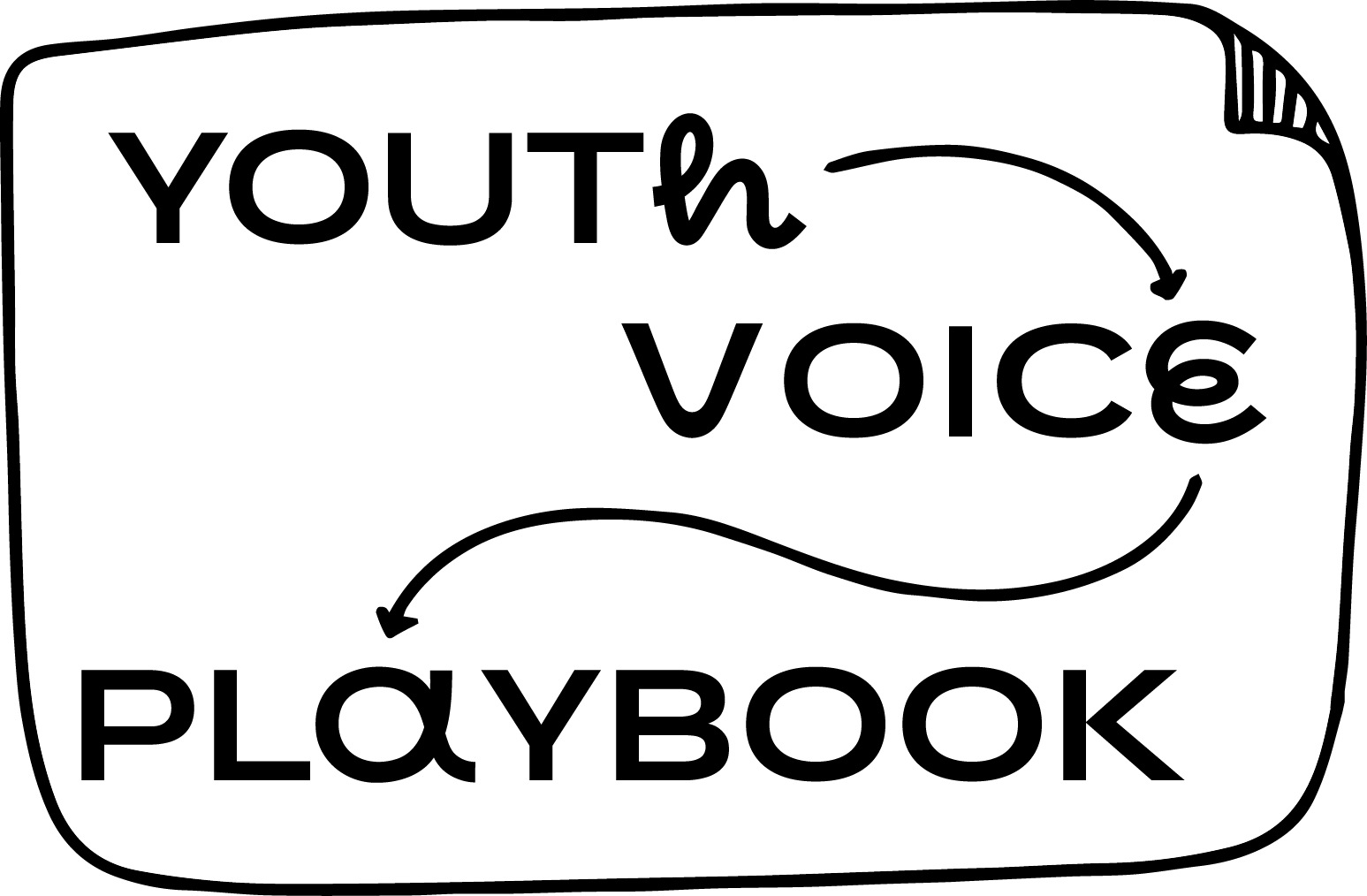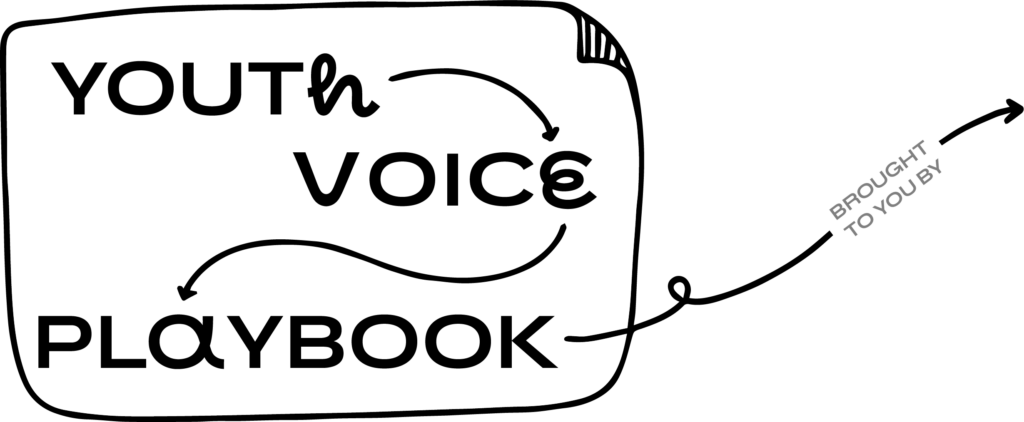Hmm, do I need their parents’ permission
…for these young people to talk to me?
Can I publish these quotes?
If I do, how do I make sure they stay anonymous?
This question is kind of sensitive…
…should I ask it?
But this stuff is really important, so we recommend that everyone read this chapter.
Side note: If you are just looking for some strategic, time-sensitive, youth perspective on your product, but don’t have the time and resources to work through everything we outline in this chapter, we hear you and we get it! If this all feels like too much, consider partnering closely with an existing organization that can help you navigate this process responsibly, ethically, and with greater ease. Partnering doesn’t absolve you of responsibility for ensuring that young people have a safe and positive experience and that you’ve gotten the ethics review and permissions you need. So check out this chapter to think through the various considerations, but don’t panic – you don’t have to do all of this alone.
In this chapter, we’ll dive right into what can feel like the most daunting pieces of doing research with youth. Let us say a few things right off the bat:
This chapter is divided into a few sections. We start by talking about what it looks like to work with an ethics review board or IRB. After that, we talk about some important practices to keep in mind to ensure the safety and well-being of your youth participants. This chapter also includes a long list of additional resources, as we are not able to be totally comprehensive in this playbook, and you will likely need to do some additional reading about relevant regulations and considerations for your specific organization. Let’s dive in!
Is a formal external review needed?
If the youth engagement activity you are planning to do would be considered research, and is with human youth (which we assume it is…), then yes, you need external review. (If you’re not sure if you fit into those two categories, check out the Resources section at the end of this chapter!)
In general, if you intend to publish your results publicly, utilize quotes from participants, or collect identifiable information from the young people, this will likely warrant participant protections and oversight from an IRB.
It never hurts.
It never hurts to get IRB approval (though it can slow things down). If you’re not totally sure if you need an IRB to get involved, just ask! It is always a good idea to explain your project and see what they recommend. IRBs are typically quite approachable and want to be supportive of good research, and they can help guide you on whether or not you actually need to submit your plans to them for review. Additionally, getting IRB approval can help ensure you’ve thought through a range of ethical considerations for your project. It will also help you ensure you have a green light to publish results that might be worth sharing.

Example from HopeLab
Should your nonprofit seek out IRB approval for youth engagement work, even in cases where it’s not technically required? This was a question Hopelab faced when working with young people to design and interpret the results of a national survey on youth social media use. While IRB approval was required to report the results of the national survey, it wasn’t required for the initial youth-centered survey design work or subsequent youth co-interpretation of data in interviews and focus groups, because these processes weren’t aimed at contributing to generalizable knowledge and therefore didn’t fit the criteria for “research.” Due to time concerns, we opted not to go through an IRB process for these activities, a decision we later came to regret. The feedback we received from young people during the co-interpretation interviews and focus groups was so rich and eloquent that we really wanted to include direct quotes from young people in the published report alongside the quotes we obtained as part of the IRB-approved survey. Unfortunately, our hands were tied by our lack of IRB approval for this part of the process. Lesson learned: moving forward, we started planning for the IRB process as part of our project timelines.
You don’t have to be at a university.
You can get IRB approval even if you’re not at a university. If you aren’t at a university or other research institution and don’t know where to find an IRB, you can simply search for “independent IRB” online and lots of results will show up. You can also use the OHRP database to look up any IRB providers you find and make sure they’re authorized with the government.

Example from Character Lab
As a nonprofit organization, we don’t have an institutional IRB, so we work with an external IRB called Advarra when we need IRB approval. However, not all of our activities require IRB approval. When researchers are in the process of developing their studies, we have students in our CLIP program review the survey questions to make sure they are relevant, understandable, and engaging. Since this review is simply user testing and feedback, and no identifiable information is collected, Advarra told us it doesn’t meet the criteria for research, and thus we don’t submit these plans to the IRB for review. However, once the study is “polished” and ready to actually run in schools, we do submit it to the IRB for review before we begin collecting data from youth participants. Because we’ve worked with the same IRB for many years, we know their process well and typically receive approval promptly.
Even if you don’t need an IRB, there are important legal considerations.
Even if your project isn’t formal research and doesn’t meet the criteria for IRB review, there are still important legal and youth protection criteria to consider. You may need to develop an organizational policy on this, or find a trusted partner to outsource this work to. For example, as we were creating this playbook, we shared a draft with our colleagues at Young Futures who were getting ready to engage youth in their work. Young Futures is a non-academic, non-profit entity; their policies are informed and governed by their fiscal sponsor. In this case, their team needed a new, specialized policy to address legal considerations, risks, and youth protection. Their legal counsel took into account data privacy laws (specifically COPPA & CCPA) and minor labor laws (given that they wanted to compensate participants). Some key laws (e.g., about video recording youth participants) also varied by state.
The Young Futures team had to create a secure, limited access server to store any data collected. They also needed additional youth protection training for their team, certifications from their training, and background checks for team members. Creating their specialized policy for youth voice work – and setting up relevant data systems and certifications – took the Young Futures team about five weeks, and required additional funds to cover legal counsel hours. Knowing about this lift ahead of time allows you to plan for it accordingly – something we cover more in chapter 3.
Working with an IRB
The ethics review step can be one of the most important parts of setting a project up for success. We recommend planning for it as a significant part of your project timeline, since it can take anywhere from a few weeks to a few months. However, if you do this step well, you’ll already have planned the vast majority of your project! Here are a few things we’ve learned about the process of working with IRB:
IRB review times vary.
Our teams typically estimate that the process will take us anywhere from 2 weeks to 2 months. Other researchers have told us that their universities can take up to 6 months to complete a review. As you’re developing your project plans, find out what you should expect from your IRB in terms of response time for study review. Factor wait time, clarification questions from the IRB, and possible revisions into your project timeline.
Get to know your IRB and their requirements.
If you are partnering with a university-based researcher, you may be able to utilize their IRB. If you are an independent organization, you’ll need to find an independent IRB. In either case, we have learned that it’s useful to set up a meeting with the IRB to learn about how their submission process works and what details they’ll require. University IRBs often require that a researcher affiliated with their university fills a certain role on the project, and their online submission portal may only be available to university staff – so the more you can learn up front, the smoother things will go. We recommend contacting the IRB at the start of your project to find out if they’ll be able to do the review, and to get their suggestions on how to handle the submission process.
Be thorough!
A good IRB application includes all the details – not just general answers like “we will do some interviews” but details like what questions you’ll ask, what sort of setting the interviews will take place in, how you’ll ensure that youth feel safe and comfortable, how you’ll collect informed consent from their parents or guardians and assent from the youth themselves, how you’ll manage any data you collect, etc. If you leave things vague in your application, you can expect a lot of follow-up questions from the IRB. While writing a detailed protocol can feel tedious, it will save you a lot of time later, and remember – it’s all for the goal of protecting the participants. For example, you might wonder why the IRB cares so much about how participants get invited to your focus group. But one of their responsibilities is to make sure students aren’t coerced into participating – so it does matter if you have the teachers from their school tell students they need to participate as part of their grade in the class, versus if you have teachers extend an invitation and anyone can sign up. You should be prepared to explain whatever choices you are making and how you are making them through the lens of protecting the youth.
We know that writing a new IRB application can feel overwhelming, so we’re here to help! In the Resources section at the end of this chapter, we have included a sample IRB application for you to use as a starting point; it will show you what information is often requested. However, your IRB might require slightly different content, so check with them first before you start writing.
After a project is approved, you have to tell the IRB if you make changes to what you said in your proposal.
We recommend airing on the cautious side to inform IRB of relevant information or changes. There is usually a formal modification process that you will follow to submit any updates. For example:
- If your study was initially approved to recruit via social media ads and you decide that you want to add recruitment through key contacts at other youth orgs via email, you will likely need to file a modification with the IRB.
- If your protocol indicated that you would be conducting interviews/meetings over Zoom, but you have a local group of youth who are able to meet in person, you will need to file a modification with the IRB.
The good news is that procedural modifications often take way less effort to create and less time for your IRB to review than new applications. So don’t be afraid to share how your project is changing over time!
You will also need to notify the IRB if anything goes awry. Hopefully this won’t happen (knock on wood), but data breaches, unauthorized disclosure of personally identifiable information, adverse reactions from participants, and other unexpected problems need to be formally reported.
Think about both youth assent and parent/guardian consent.
What do youth and parents need to know to make an informed decision about participation? How can you explain your project in a way that’s accessible to your participants and their guardians, including speakers of other languages? What will you do if they change their mind partway through, or after data is collected? How will you actually collect and record consent/assent – via email, phone call, virtual meeting, or in some other format? All of these choices have implications for who can participate or not (for example, it’s hard to collect consent via email from someone without a computer and you may not have resources to translate your consent form into a range of languages), so think carefully about why you are choosing your methods and who that makes space for or excludes. Be prepared to document all of these choices in the IRB proposal.
There may also be instances when you might actually not want to ask parents/guardians for permission for their kids to participate, like if you are doing a study with LGBTQIA+ youth and don’t want to inadvertently out a young person who hasn’t yet told their parents about their orientation. All of this will need to be detailed in your application to the IRB, including rationale for who you will get consent or assent from. Ultimately, it’s up to the IRB to make the decision of whether or not to waive parental consent for your project; otherwise, consider it a requirement.
Depending on the IRB you are working with, they may have different templates for assent and consent forms. You should ask them up-front whether there’s a specific template you must use, or whether you can provide your own. We’ve included an example in the Resources section at the end of this chapter for you to use as inspiration if your IRB doesn’t have its own template.
Creating a safe & positive environment
Regardless of whether your project requires formal external review by an IRB, you should create an internal review system to make sure your engagement with youth is set up to be safe, responsive, and engaging. Below are a few principles and important considerations to keep in mind.
Consider inclusivity in all of your materials.
The first part of minimizing risk is making sure that participants and their guardians know what to expect from working with you. That means designing your project with inclusivity and access in mind.
For example, start by putting your recruitment and consent/assent materials into language that youth and their guardians can really understand. Replace jargon with more accessible terms, and consider translation into other languages if needed.
Additionally, plan for times and locations that will work for your participants. For example, will participating in your focus group require them to take public transit across the city during the evening when riding the subway is less safe? Could you do it closer to where they live, or remotely, or at a different time, or provide direct transportation? This sort of thoughtfulness goes a long way in both minimizing risk and ensuring that all participants feel welcome, safe, and valued.
Build in safeguards for accountability.
Too often, harm has been done to young people who were alone in a room with a single adult. Build an accountability system to keep youth safe, and to avoid tragic situations or accusations thereof. This might begin with norms like avoiding ever having just one young person and one adult alone in a space together (whether virtually or in-person), or setting meetings to auto-record. Whatever your norms and safeguards are, be sure to document them in your consent/assent forms, so participants also know what to expect.

Example from Character Lab
Part of our role is facilitating interviews between researchers and young people so that the researchers can get input on the studies they’re developing. We facilitate these conversations over Zoom. To ensure that students are never alone with a researcher, we schedule them in a Character Lab-controlled Zoom room, and they are always proctored by a Character Lab staff member. Our staff have all had background checks and training on ethics, youth safety, and our child safety policies. Our staff member opens the meeting, lets the participants in from the waiting room, introduces them to each other, and then says something along the lines of “OK, I’ll let you take it from here but let me know if you need anything!” and then mutes themselves and goes off-camera. This allows the researcher(s) to lead the conversation naturally and without intrusion, but also provides a second set of eyes and ears in case anything uncomfortable happens. (It also helps quickly and easily deal with situations where the internet drops a student from a call and they have to be let back into the room, etc!) At the end of the call, the staff member comes back on camera to say goodbye and answer any logistical questions that the participants may have. Although this is a huge investment of staff time, it’s an important part of our commitment to the safety of both students and the researchers we partner with. It also serves as a good opportunity for us to monitor how the conversations are going, and identify any opportunities for improvement in how we prepare researchers to work with youth.
Be prepared for how you’ll handle concerns about young people in acute distress.
These are real young people you are working with, and it’s likely that as you ask them about their lives, they will tell you – and sometimes what they tell you will be weighty. Be clear about what facilitators should do if a young person shares that they’re really struggling. This might involve having a list of sharable resources (e.g., the 988 Suicide & Crisis Lifeline, as well as local resources) and making sure you have a clear policy for when parents/guardians need to be notified. Oftentimes you will need to articulate something about these policies as part of the IRB application process, which can be a helpful way to get additional support in developing or clarifying your plan for how you’d handle these difficult events.

Example from Character Lab
We have a large group of students in our CLIP program, and we’ve worked hard to build a strong sense of community among them. This has resulted in a highly engaged and communicative cohort, which has been fun and productive. However, one of the results of this trust and sense of community is that some students have opened up to our staff more and more about hard things happening in their lives, such as allegations of sexual abuse of other students at their schools, mental health crises they are facing, suicidal ideation of their friends, asking for help fundraising for family crises, and more. Though the priority in each of these situations is clearly the safety and well-being of the students involved, it does also take a significant amount of time and mental and emotional energy for our staff who interact with the youth. In order to ensure we are well-equipped to handle these situations in a way that is aligned with our values, legal responsibilities, and organizational policies, we have hired a trained social worker to support the CLIP program. This social worker is available as-needed to consult with and train staff, work directly with students when referred by staff, and help connect students to appropriate outside resources when necessary. We also include training for the peer mentors in our program on how to identify and address possible signs of crisis or concern, and give them resources they can share with other students. Lastly, we are clear with students from the beginning about when we will hold their concerns in confidence and when we may bring in other caring adults to support them; this transparency and forthrightness about our policy is intended to help them be both respected and safe. We should note that this example is shared as one possibility of how to handle this, but our CLIP program was year-round, involved hundreds of students, and used a significant chunk of our organizational budget. You don’t need to do something this resource-intensive to keep youth safe, but you do need to be prepared.
Know your responsibilities around mandated reporting.
In addition to things that youth tell you directly, in virtual settings, it’s also possible that you may witness something in the background of a young person’s Zoom call that is concerning. Mandatory reporting is regulated at the state level, so there is more than one standard for what is considered a reportable event and who is required to report. The most basic standard is when you have “reasonable cause to believe that a child has been subjected to abuse.” Most states consider anyone who works in an institution where they have frequent contact with children a mandated reporter, such as social workers, teachers, doctors, and law enforcement; some states have “catch-all” obligations that mean any person who believes they’ve witnessed abuse must report. Learn about the obligations and processes for your particular state, as well as the guidelines from your IRB and university (if applicable), so you can be prepared for this hopefully-rare scenario.
A final note
At this point, you might be feeling overwhelmed by the many legal, ethical, and logistical pieces of doing this sort of work with young people. We hear you – it is a lot to figure out! But you’re not alone in figuring it out. You can also always partner with an organization like In Tandem that can help handle logistics like IRB, consent/assent, student safety and privacy, and more. You can also find more localized organizations like university youth research councils that have done this legwork before and can serve as a guide for you along the way. Ultimately, the heavy things in this chapter will help you prepare for scenarios that are hopefully very unlikely – but by preparing for them in advance, you’ll be equipped to care well for youth who may really need support.
Resources, activities, & digging deeper

Belmont Report
This is the foundation for ethical human subjects research, and outlines the principles that all of the regulations and oversight are designed to enforce.

Vocabulary you should know
If this whole chapter is gobbledygook to you, we recommend checking out this little appendix we wrote with some of the most important key terms and concepts, like human subjects research, minimal risk, and informed consent.

Am I doing human subjects research?
This tool might be useful to you if you are trying to answer that tricky foundational question of whether or not your project actually counts as research, and therefore what sort of oversight will be required.

Sample informed consent/assent form for teens
This is a really simple version of how you might tell a young person about your project and formally document their affirmation that they want to participate.

Sample IRB application
This example is meant to illustrate the types of questions that an IRB may ask you. Every IRB protocol is slightly different, so make sure you use the one as provided by your IRB.

Laws to know
The laws listed in this document are just a sampling of the legislation that might impact your work with minors. We are sharing them to help you get a sense of the landscape, but you should check with your IRB to see if there are other relevant or new regulations in your state.
What to Read Next
Wow, you made it through a real doozy of a chapter. Honestly, you’ve already done some of the hardest work in this process. Congratulations! Take a moment to pat yourself on the back. Then, let’s turn our attention to the next big elephant in the room: paying for everything you just planned out. If you haven’t figured that out yet, turn to chapter 3!




























